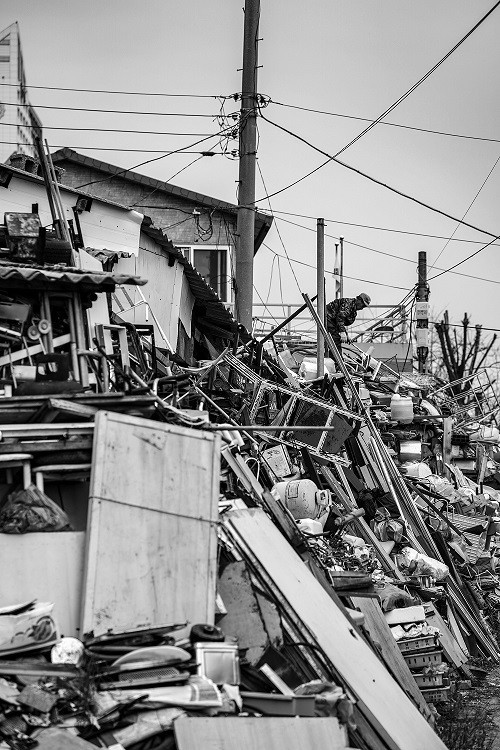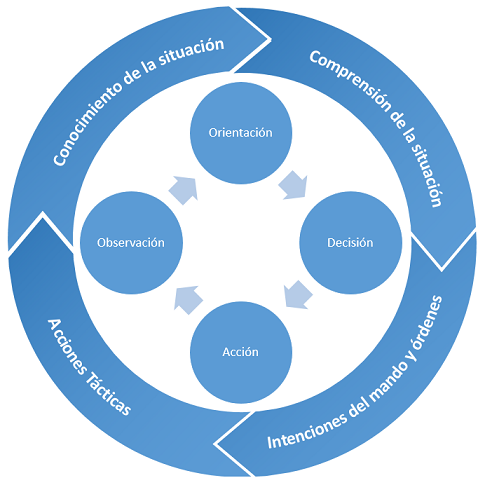Command and Control Systems and their humanitarian-aid function

One of the first problems that raises its head when dealing with command and control systems is the plethora of abbreviations used according to the aspect to be stressed in each case. Thus we have C2 (Command & Control), C3 (Consultation, C2), C3I (C2, Communications and Intelligence), C4 (C3, Computers), C4ISR (C4, Intelligence, Surveillance and Reconnaissance) o C4ISTAR (C4, Intelligence, Surveillance, Target Acquisition, and Reconnaissance), among others.
The term generally used for NATO purposes is C3 (Consultation, Command & Control) to refer to strategic level systems (the highest level), which includes the capacity of political consultation. On the other hand, C2 is normally used as the general term to designate all types of command and control systems, although it is also used to denominate systems without capacity of consultation at operational level. Lastly, C4 (Command, Control, Communications & Computers) is the denomination normally used with tactical-level systems.
Oddly enough, many different definitions of “command and control” can be found, especially when the two terms are analyzed separately (command + control), since different countries use different terminology. If they are analyzed jointly as one function, however, some consensus can be found. Regardless of the set of initials used to denominate the system, the “command and control” function in the military world could be likened to the “management” function in the civil world, allowing for the intrinsic differences between both worlds. The aim, in a nutshell, is to achieve the established goals (fulfill the mission), doing so by means of the exercising of authority by a specifically designated command over the resources/forces assigned thereto. This function has to endow the command with situational awareness in good time to make a useful contribution to the decision-making, giving-of-orders and mission-control procedures.
For this purpose a C2 system must contribute towards:
- Obtaining information.
- Processing, analyzing, synthesizing, displaying and distribution this information, both vertically and horizontally.
- Planning and decision-making.
- Passing orders down the command chain.
- Control of the ongoing situation on the basis of new data, i.e., the Observe, Orient, Decide, and Act (OODA) loop.

A C2 system in a strict sense is made up by command posts, sensors and information and communication subsystems. In many cases, however, when speaking of a C2 system, reference is being made to the information and communication system supporting the command and control process, such as TALOS, GMV’s inhouse C2 system for coordination and execution of fire support, or EUCCIS, the European Command and Control Information System being developed and maintained by GMV since 2016 for the European External Action Service.
Although designed for military operations, these systems are conceptually and practically applicable to humanitarian-aid operations. We have all seen footage of the armed forces collaborating with such civil organizations that have asked for their help. And the fact is that one of the armed forces’ prime missions is to work with other institutions towards citizen welfare and security, as laid down in the Strategic Defense Review (Revisión Estratégica de la Defensa) and the National Defense Law (Ley Orgánica de la Defensa Nacional) passed by the Spanish parliament in 2005. Indeed, it was in this year when the Military Emergency Unit (Unidad Militar de Emergencias: UME) was set up in Spain to meet society’s demand for an efficient disaster response.
The tasks to be carried out in military and humanitarian-aid operations are different but many of the problems faced are similar. Disasters of many different types occur nowadays, spawning a corresponding array of many different types of international aid. Then there are natural disasters and anthropogenic disasters. Some break out suddenly; others are the result of a gradual process drawn out over time, like some environmental disasters. An effective response to all these different types of disasters calls for a series of coordination capacities and tasks that can be likened to those provided or aided by a military command and control system. These tasks and capacities, moreover, seldom differ according to the type of disaster.
Some of the problems to be faced when setting up a command and control system in international humanitarian aid operations pertain to the overarching authority (who is in charge of the operation) or how to obtain the right information (what has happened or is likely to happen). Problems normally crop up in multi-country operations due to the varying standards from one country to another, plus logistical problems arising from the need to agree on a shared logistical center. Communication problems also arise, such as which communication equipment or frequencies to use. Other challenges are posed by cultural differences, the use of different languages or even the fact of coming from different institutions or organizations. But it just so happens that all these problems are shared by any joint military command and control system (army, navy or air-force) or combined operations involving different countries.
Humanitarian-aid operations have shown civil-military collaboration to be key, and this in turn involves changes in the way of understanding goal achievement, calling for a less “military” (top-down) approach and a greater focus on consensus and cooperation. Coordination of this collaboration is at times complicated; in general all want to be coordinators rather than coordinated; but nowadays international organizations have tools to mitigate this problem, such as the On-Site Operations Coordination Centre (OSOC) or the United Nations Humanitarian Operations Centre (UNHOC), among others.
Improving the international disaster response is a Sisyphean task. Disasters and crises will continue to occur, while the community’s expectations will grow accordingly. Standardization will be crucial here, focusing at first on tasks to facilitate coordination between civil and military organizations, then moving on to a more ambitious phase of standardizing information and communication systems to ensure proper exchange of information between countries and international organizations, learning lessons from the past and becoming more effective and efficient in dealing with today’s disasters and, unfortunately, those that are bound to occur in the future.
Author: José Luis Delgado Gamella